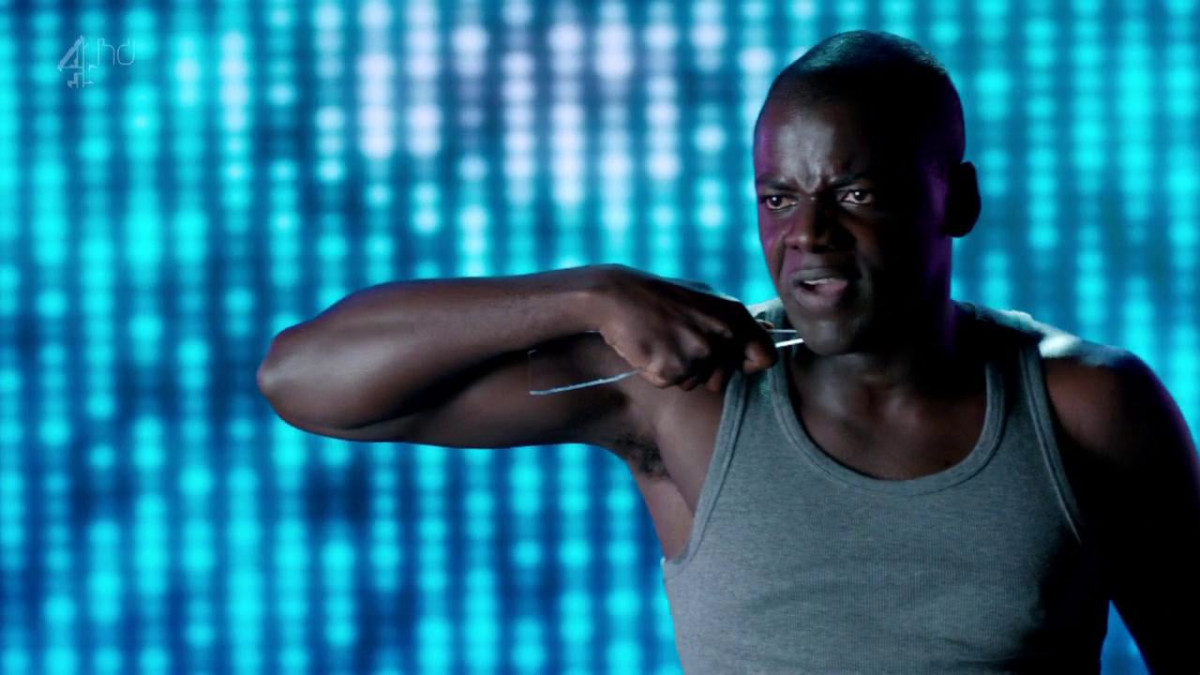Title Black Mirrorwhich translates as “Black Mirror” , refers to the screens of electronic devices. Each episode of this series created by Englishman Charlie Brooker explores a different plot, but all of them hypothesize extreme consequences of technological progress for human psychology and behavior, as well as for the functioning of society.
This is why the series is extremely interesting to analyze from the point of view of Psychology
What does Black Mirror tell us about ourselves?
Most chapters of Black Mirror They are situated in more or less futuristic contexts. The versions of the present and the future that the series proposes can be easily related to everyday aspects of the digital age in which we live, such as the violation of privacy on the Internet or the enormous influence of social networks, television and mass culture.
Below we will briefly comment on the episodes of Black Mirror from a psychological perspective. Beware of spoilers!
1×01. The national anthem (“The national anthem”)
Black Mirror It started with a very simple approach: to save the life of the princess of the United Kingdom, the prime minister must have sex with a pig live. This satirical chapter focuses on the public reaction to the humiliation of the elected leader – first mockery and sadism that reflect the resentment of the people against their rulers , then respect and gratitude. Rory Kinnear, who stars in the episode, masterfully conveys the peculiar emotional odyssey that his character goes through.
1×02. 15 million merits (“15 million merits”)
The futuristic setting of this episode is reminiscent of other science-fiction dystopias such as those of A happy world and 1984. “15 million merits” is an allegory about the increasing value of social status and money, increasingly difficult to obtain for many, and criticizes the degradation to which participants in entertainment programs in the style of The X Factor in order to achieve wealth and fame. Before Black Mirror Charlie Brooker created Dead Seta zombie miniseries that satirizes Big Brother.

1×03. All your history (“The entire history of you”)
What would happen Yes all our memories will be recorded on an electronic device? Of course, Black Mirror offers pessimistic answers: we would live anchored in the past, which we would review obsessively, we would distrust natural memory and there would be voyeurs who would pay for devices removed from young girls, who would then be rejected by a large part of society. Although there would also be those who would choose to live free of such a machine – either out of principle or out of “posture”.
2×01. I’ll be right back (“Be right back”)
A woman clones her dead husband using the data he left recorded on social networks, to which he was addicted. This chapter comments on the false image that we project on the networks social (a recurring theme in Black Mirror) and explores the possibilities of artificial intelligence, which also forms the backbone of another recent science fiction series, Westworld. Grieving the death of a loved one is another major theme, especially how we hold on to our memories during this process.
2×02. White bear
This is the first of several chapters of Black Mirror that hide key information from the viewer until the last minutes. A woman wakes up with no memories in a world in which, as she is told, a virus has turned most people into brainless people who only care about recording everything they see with their cell phones. “White Bear” presents a fast-paced narrative to push the use of suffering of others as entertainment of masses Once again the resource of memory manipulation through technology is used.
2×03. The Waldo moment (“The Waldo moment”)
The plot will be familiar to you: a television character whose only role is to mock the “establishment” runs for election to the position of prime minister. In this case the candidate’s name is Waldo , not Donald, and he is a blue (instead of orange) 3D animated bear. The chapter prophesied the frivolous, intransigent and supposedly anti-system course that politics would take in the following years due to the absolute discredit of the rulers.
2×04. White Christmas (“White Christmas”)
The Christmas Special Black Mirror takes advantage of its extra minutes to narrate three related stories starring Jon Hamm (Don Draper in Mad Men). In “White Christmas” a device allows blocking whoever we want to the point where we can no longer see and hear them, and computerized copies of ourselves can be used as slaves to perform basic computing tasks. Among other topics, this episode, especially dark and disturbing, analyzes the attitude that people will adopt when artificial intelligence advances to acquire emotions and a sense of identity, and delves into the dehumanization to which technological progress leads us.
3×01. Nosedive
“Plummet” is inspired by Peeple, a real application which allows us to value other people based on our interactions with them. Following the style Black Mirror of taking everyday technology to the extreme, for the characters in this chapter everything depends on their rating (between 0 and 5 stars), from social status to the possibility of finding an apartment. The protagonist goes in a few hours from being a person concerned only with appearances to the emotional catharsis of one who frees herself from the tyranny of “what will they say”, embodied today in the “likes”.
3×02. Playtesting (“Playtest”)
A young backpacker has his credit card number stolen and decides to try a virtual reality video game in exchange for money to return home. In addition to presenting in a very suggestive way, in a nightmarish environment, the possibilities of augmented reality and the personalization of video games based on personal experiences, this chapter of Black Mirror talks about the use of technology to escape from life real from the story of the protagonist, who does not feel able to interact with his mother after his father died from Alzheimer’s disease.
3×03. Shut up and dance
A teenager is recorded through his webcam while he masturbates, and the person who obtained the video threatens to send it to all his contacts if he does not follow the instructions he gives him. Paraphilias are relevant in this episode, which presents, like several others of Black Mirrorcharacters with whom the viewer empathizes and who turn out to have carried out most morally reprehensible behaviors from what we are given to understand at the beginning of the chapter.
3×04. San Junipero (“Saint Junipero”)
Probably the only episode of Black Mirror which can be described as positive to a certain degree, “San Junípero” is a nostalgic story that revisits the 80s. The chapter explores the possibility of the Life after death through the transfer of our minds to virtual supports. He also reflects on love in the last stages of life and on lost opportunities, and uses as a central theme the loving relationships between homosexual and bisexual people who have lived in times when their preferences were not legitimized by society.
3×05. The science of killing (“Men against fire”)
In the alternate world of this episode, soldiers with neural implants that enhance their senses exterminate humanoid beings known as “cockroaches.” “The science of killing” is a particularly sinister chapter which reflects on the dehumanization to which the military is subjected in order to carry out the brutal actions of war, as well as on the false truths that governments use to justify their war campaigns before public opinion.
3×06. National hatred (“Hated in the nation”)
The longest episode of Black Mirror It is a police thriller with a format closer to that of a film than to the rest of the series’ chapters. In “National Hate,” set in a very plausible near future, every day The person who is tagged the most times dies On twitter with the hashtag “#MuerteA”. The central themes of the plot are virtual harassment and the diffusion of responsibility that occurs in public lynchings that take place on social networks: if someone’s death depends on the hatred of many people, is it the victim’s fault? or of each of those who would like him to die?









